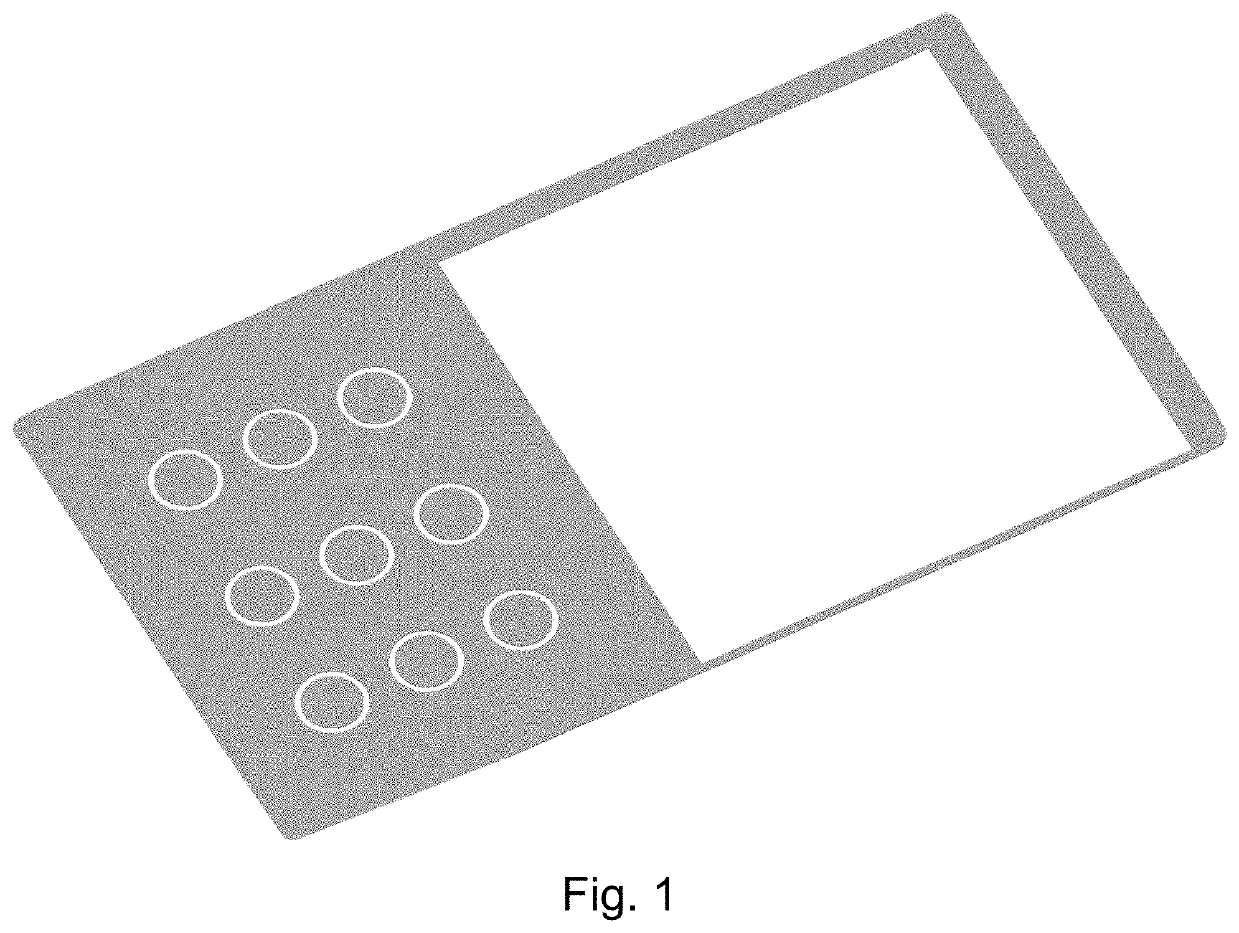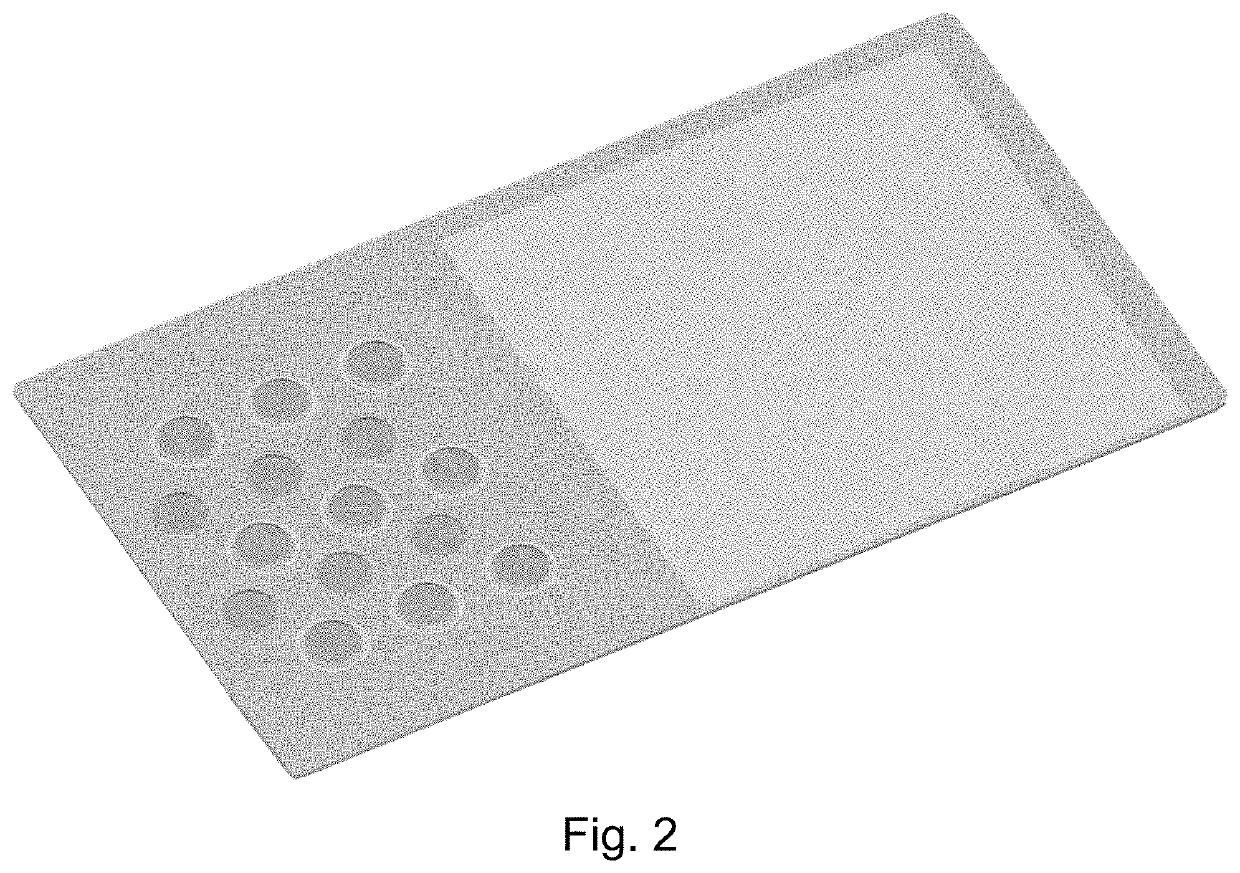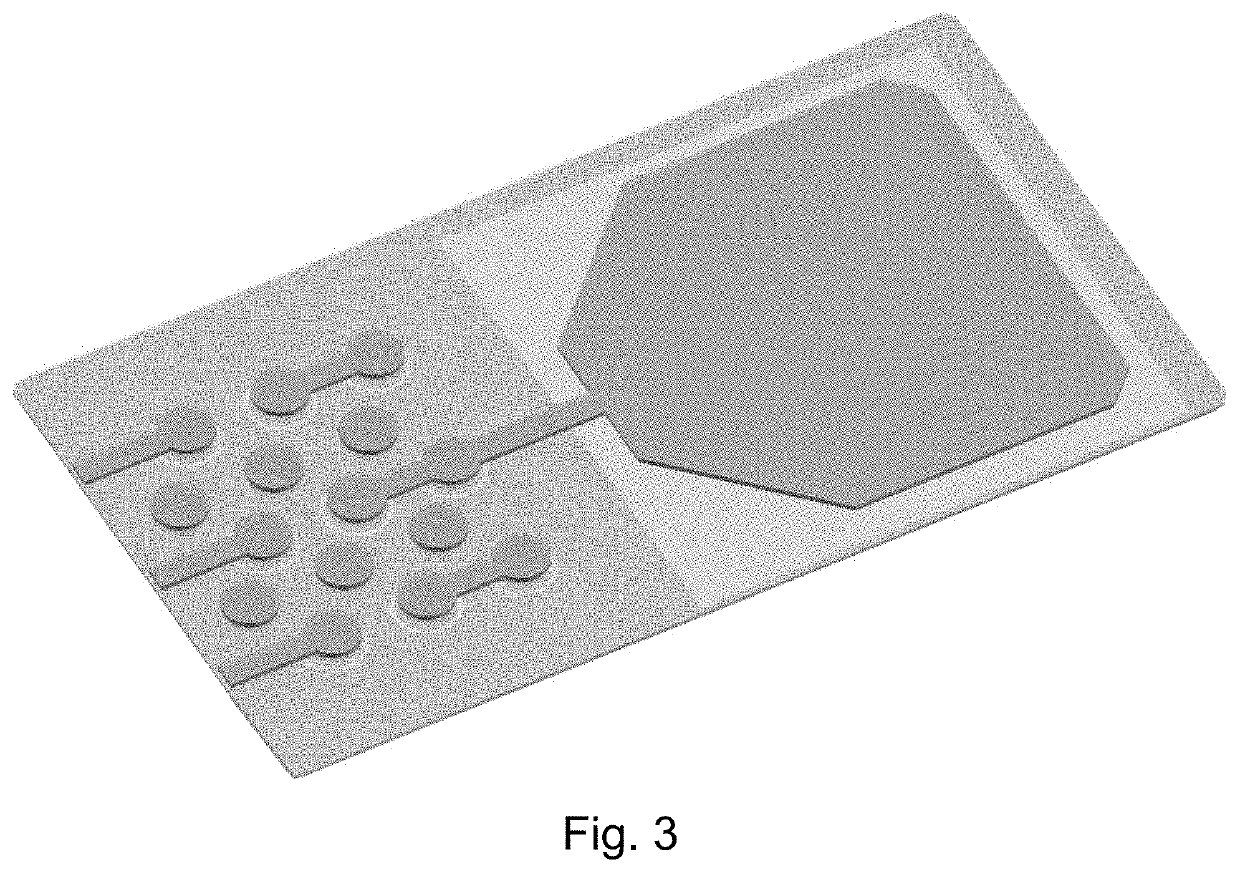System and method for superconducting multi-chip module
a superconducting multi-chip module and integrated circuit technology, applied in the direction of semiconductor devices, semiconductor/solid-state device details, electrical apparatuses, etc., can solve the problems of low contact resistance, low voltage level of superconducting circuits, and low contact resistan
- Summary
- Abstract
- Description
- Claims
- Application Information
AI Technical Summary
Benefits of technology
Problems solved by technology
Method used
Image
Examples
Embodiment Construction
[0112]FIGS. 1 through 7 show steps of a preferred embodiment of the method for preparing indium bump bonds on superconducting Nb chips, integrated into a prior-art method for fabricating superconducting integrated circuits. All of these are designed to be carried out on an entire 150 mm silicon wafer, although only a 2-mm portion of a single chip is shown for simplicity.
[0113]FIG. 1 shows Step 1, the deposition of a superconducting Nb ground plane comprising 100 nm of sputtered Nb on top of an oxidized silicon wafer, known in the Hypres standard process (www.hypres.com / foundry / niobium-process / ; www.hypres.com / wp-content / uploads / 2010 / 11 / DesignRules-6.pdf; Yohannes, D., et al., “Parametric Testing of HYPRES Superconducting Integrated Circuit Fabrication Processes”, IEEE Trans. Applied Superconductivity, V. 17, No. 2, June 2007, pp. 181-186, www.hypres.com / wp-content / uploads / 2010 / 12 / Parameter-Testing.pdf) as the layer M0. The small circles show the ultimate locations of the indium bump...
PUM
| Property | Measurement | Unit |
|---|---|---|
| temperature | aaaaa | aaaaa |
| temperature | aaaaa | aaaaa |
| diameter | aaaaa | aaaaa |
Abstract
Description
Claims
Application Information
 Login to View More
Login to View More - R&D
- Intellectual Property
- Life Sciences
- Materials
- Tech Scout
- Unparalleled Data Quality
- Higher Quality Content
- 60% Fewer Hallucinations
Browse by: Latest US Patents, China's latest patents, Technical Efficacy Thesaurus, Application Domain, Technology Topic, Popular Technical Reports.
© 2025 PatSnap. All rights reserved.Legal|Privacy policy|Modern Slavery Act Transparency Statement|Sitemap|About US| Contact US: help@patsnap.com



